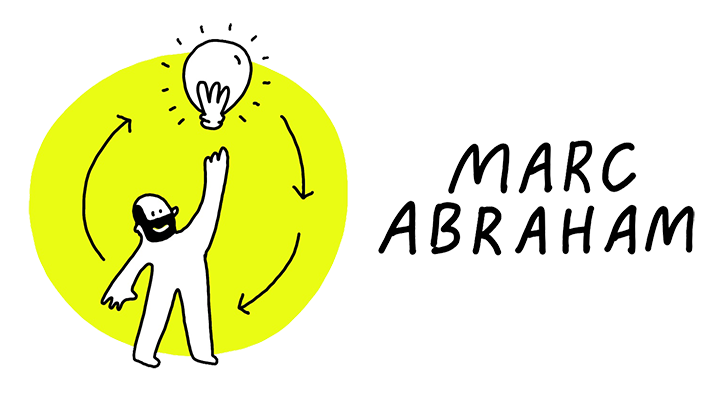“The work is both highly strategic and tactical. But it is far more than creating product collateral, doing sales enablement or managing launches, a common misperception of the role” reads one of the opening paragraphs of Loved: How to Rethink Marketing for Tech Products.
“Loved” is a book by Martina Lauchengco, an experienced product marketer and now partner at Silicon Valley Product Group. In the book, Laughengco describes the four fundamentals of product marketing:
- Ambassador: connect customer and market insights – Everything a product marketer does must be grounded in customer and market insights. This involves everything from segmenting customers to understanding their pain points. Product marketers share their knowledge – quantitative and qualitative – with product or research teams. Acting as an ambassador means understanding how desired customers think and act, then applying it to product go-to-market.
- Strategist: direct your products go-to-market – As a strategist the role of the marketer is to ensure that all your market-facing activities matter, aligning the go-to-market plan with business goals. Lauchengco explains how strategies guide the tactics that get you from A to B. A good product go-to-market makes clear the why and when for certain tactics in addition to the what and how.
- Storyteller: shape how the world thinks about your product – This is all about positioning: the place a product occupies in people’s minds. It sets a context in which a product’s value becomes clear. The key messages supporting that positioning are what marketing and sales teams say and promote to reinforce that position.
- Evangelist: enable others to tell the story – The goal here is to create a product that others are happy to tell stories about. Lauchengco stresses that evangelism only works if it feels authentic. The range of work to make this happen includes providing sales teams with the right messages and tools to make them sound like genuine advocates, not just salespeople trying to sell.

Lauchengco shares useful tips for each product marketing fundamental:
Ambassador
The role of the Ambassador is to connect customer and market insights. The Ambassador gathers insights, and uses or cascades these in such a way to enable critical product and go-to-market decisions.
→ Market-sensing questions – Product Marketing should try to answer ‘market-sensing’ questions and understand their implications across the entire buyer’s journey. Some example questions to ask customers:
What are they trying to do? (Jobs To Be Done)
Do they recognise and prioritise this problem?
What’s motivating them to solve the problem?
What compels them to take action?
What is this product delivers the most value?
Who is most likely to value and buy this product?
What do people need to see or hear to become customers?
→ Customer insights vs requirements – Customer insights can sometimes be heard as customer requirements. However, when product marketers bring customer or market insights to the team, the goal is to enable the team to make smarter decisions, based on market realities not just technical ones.
→ Customer insight artefacts – Personas, Ideal Customer Profile or a Jobs To Be Done story can be useful artefacts through which you can communicate customer insights. The key here is to ensure that the most important attributes that drive customer and market adoption are known and documented.
Storyteller
Each product needs a compelling story to position it in the market. Positioning and messaging are important tools for the storyteller:
→ Positioning – This is the place your product holds in the minds of customers. It’s how customers know what you do and how you differ from what’s already out there.
→ Messaging – Messaging includes the key things you say to reinforce your positioning, making you credible so people want to learn more.
→ CAST guide to messaging – The message you put out need to feel relevant to its target audience. Launchgenco offers CAST as a guide to check if your messaging is grounded in what customers want to hear. The concepts are:
- Clear – Is what you do clear and is there a reason to be curious? Is being comprehensive getting in the way of clarity?
- Authentic – Is the language evocative and meaningful to your customer? Is it said in a way makes them feel known?
- Simple – Is it easy to understanding what’s compelling or different? Will customers know what’s better?
- Tested – Has it been tested and iterated in the context customers will experience it?
Evangelist
The Evangelist aspect of product marketing is all about advocacy and enabling others to tell the story. Understanding the type of advocacy that matters most for your product go-to-market. This helps in creating content that compels other to talk about it.
→ Content that enables evangelism – There’s a distinction between promoting a product and enabling evangelism. When promoting a product you focus on product features. To create evangelism you want to share customer success stories and how they used the product to overcome a big challenge.
In “Loved”, Lauchengco then builds on these four fundamentals, and covers topics such as product / market fit and product adoption lifecycles.
Main learning point: “Loved” really helped me in better understanding the role of product marketers and their role in launching successful products. The book explains product marketing fundamentals and essentials ways of working, and is a valuable resource for all product (marketing) people.

